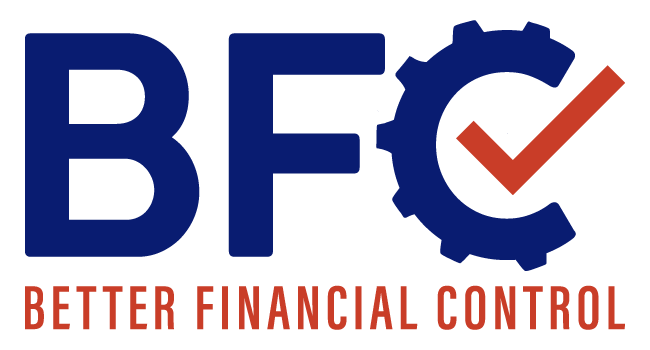What is a blind spot? A blind spot is something we fail to see, it is out of your typical line of site and we miss what is there unless called to our attention. In this blog series we are going to talk about the 5 Blind Spots most business leaders with less than 50 employees have.
5 Common Blind Spots Leaders Have Are Not Seeing How To:
- Plan and Review Finance Planning & Execution
- Hold Employees Accountable in a Collaborative Way
- Run Superior Business Meetings
- Monitor Overall Company Performance
- Manage Financial Aspects of Your Company
The aim of this blog series is to remove these common business leader blind spots by focusing your attention on each issue and bringing visibility and understanding to concepts that will be easier to see and, therefore, improve over time.
Blind Spot #2 – Collaborative Accountability
This article focuses on the second of five blinds spots many business owners have when trying to grow from five to 50 employees. In our previous article we discussed the first blind spot which was around not seeing the value around consistent company planning.
The second Blind Spot involves not seeing how to hold employees accountable in a collaborative way. The issue is often that the business owner doesn’t realise that employees are not performing to standard because they are not clear enough on what is expected of them, rather than simply not caring. Let’s look at how collaborative accountability can resolve this issue.
There are two areas employees are typically less than clear on. The first is the big picture of company vision and financial direction. Most employees are only provided feedback from a vantage point of their specific position and not at a company level. This makes it harder for the team member to understand the macro financial goals and accounting objectives and it ends up being more difficult for them to adopt collaborative accountability and make decisions based upon the company’s greater good.
The second issue is that the team member’s seat, or position, isn’t clearly defined, making it challenging for the employee to fully understand their part in the greater financial framework of your business. This is often because the manager(s) have not taken the time or had the skills to clarify the employee’s seat in a clear and concise way. Rather, they have an organisational chart and a Position Description (PD) and expect the employee to infer the true meanings of how they need to perform beyond what is written down. This causes the manager to hold the team member accountable for tasks they weren’t even aware of.
It is the company’s obligation to share with all employees the company’s finance direction and do so consistently so that the strategies and ideas can sink in over time. They say you need to tell someone seven times before they get it; employees are no different, especially when talking about the finances and goals of someone else’s company.
Once you are clear with your employee with where the company is going and what their seat is accountable for, then you are ready to begin monitoring their progress. This is where the 1:1 review strategy and collaborative accountability become important. Although there are a number of different elements to a 1:1 review with a team member, the most important aspect is providing them with clear and consistent feedback on how they are performing as it relates to the company’s expectations. Most notably, how they are performing in relation to the company’s core values and the key deliverables for their particular seat. When these two components (core values and key deliverables) have been clearly defined and discussed in advance, providing high-quality 1:1 reviews will be straightforward.
In conclusion, if you want to hold develop collaborative accountability in a productive way to ensure they are clear on where the company is going, what is expected of their performance and to provide clear ongoing feedback on how they are progressing. This clarity takes the emotion out of the process and is easy for all types of people to get behind. Collaborative accountability isn’t simply telling your staff members what is expected of them, it is actively collaborating with them to define the role as you both see it and are able to sustain. When staff members better understand what is expected of them, they become more aware of their financial obligations, both in terms of income and expenditure, and how to work as part of a unified team to achieve those financial targets.
If you are looking at how to become more clear with your employees on what you expect from them please review our posts on the accountability chart and the importance on company planning. And as always, feel free to contact us with any questions we may be able to provide insights on directly.
Until next time, enjoy the process!
Need more advice on problem solving? Contact us today for more financial insights


![Creating an Effective Business Operating System [Part 1] 2 Bfc Graphics](https://betterfinancialcontrol.com/wp-content/uploads/2023/05/BFC-Graphics-703x400.jpg)
![A Consistent Approach to Clarifying Your Business Strategy [Part 2] 3 Business Strategy](https://betterfinancialcontrol.com/wp-content/uploads/2023/03/BFC-Graphics-1-704x400.jpg)
![A Consistent Approach to Clarifying Your Company Strategy [Part 1] 4 Bfc Graphics](https://betterfinancialcontrol.com/wp-content/uploads/2023/03/BFC-Graphics-704x400.jpg)



![CrossFit for Your Business: A 3-Step Guide to Organise Your Business [part 3] 8 Organise Your Business](https://betterfinancialcontrol.com/wp-content/uploads/2022/11/5E5016F7-FE2E-42D8-AE63-37599B23E01B-704x400.jpeg)
![CrossFit for Your Business: A 3-Step Guide to Business Organisation [part 2] 9 Company Organisation](https://betterfinancialcontrol.com/wp-content/uploads/2022/11/BFC-Graphics-29-704x400.jpg)